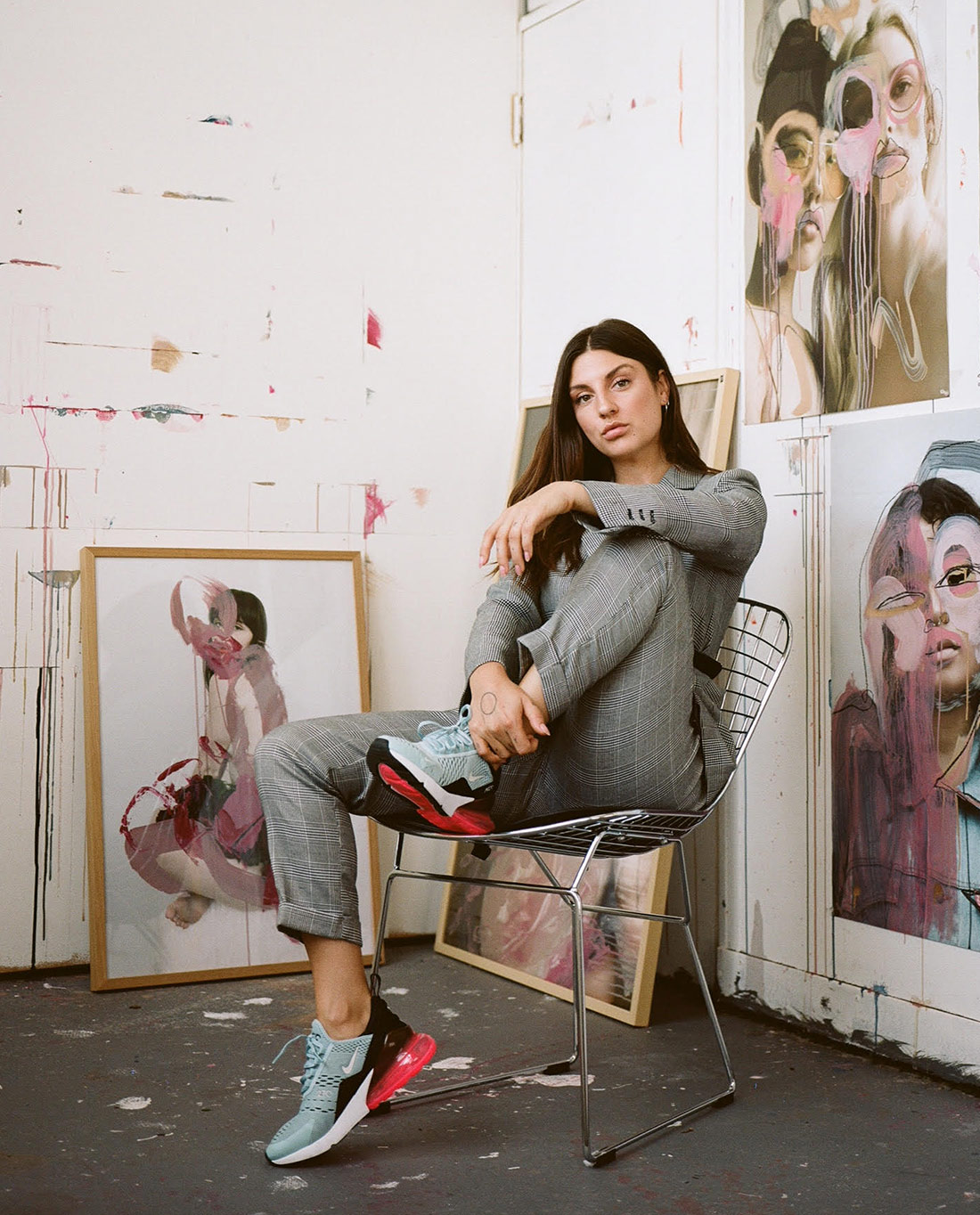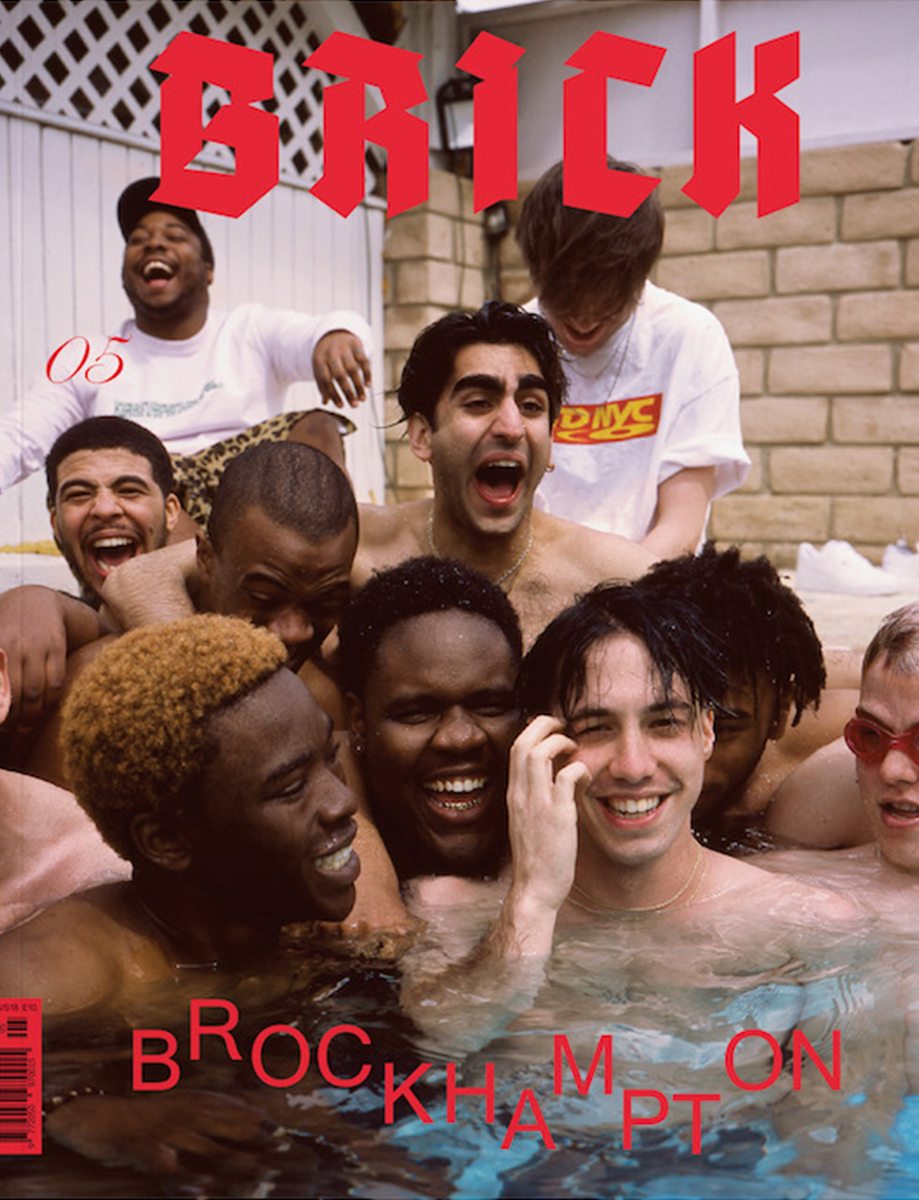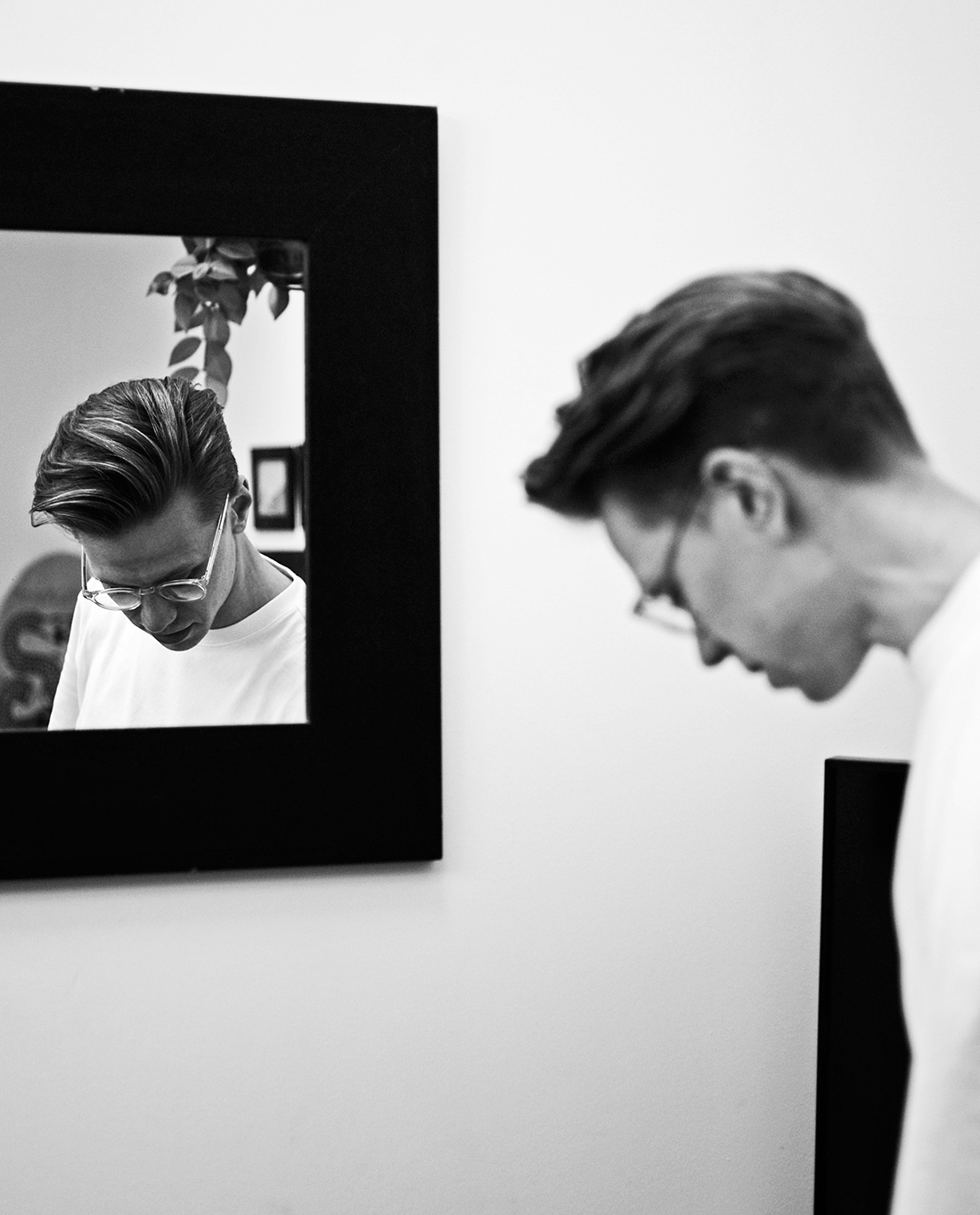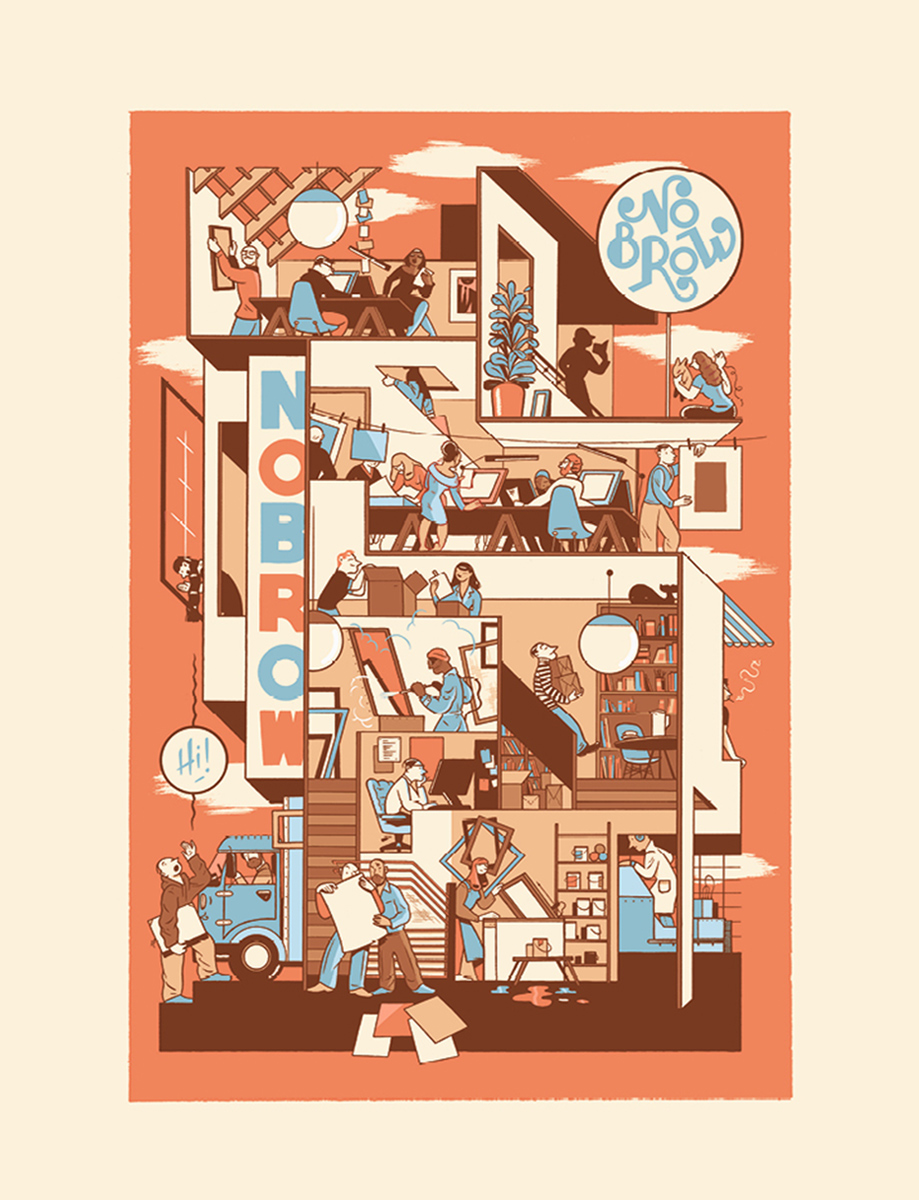Tell us how you came to develop your personal style…
I started painting the way I do now while I was at uni. I started studying graphic design and I finished doing visual art. The short version is that my mental health took a turn for the worst. I had a melt down and realised that I didn’t want to be a graphic designer. I didn’t want to make logos and I didn’t want to sit at a computer all day. But art came so naturally. During my final year my teachers told us to draw from the heart for it to be authentic. I read magazines and consumed culture through fashion publications, but I was also doing technical life drawings and paintings, which meant that the two types of women I was connecting with on a day to day basis were polar opposites. One was very real and honest, one was falsified and very aesthetically pleasing. So by painting over magazine covers and editorials I combined the two. I had this massive collection of Vogue magazines that I destroyed. It was a pretty cathartic process for me, because during the time I was pretty much suicidal. My mental health was so bad, I was very, very unwell. So in a way I helped myself by really addressing my issues and anxiety by making work like this. I got very lucky.
How does that compare to your work we see today?
When I started to photograph my own subjects, rather than using images from magazines, I connected with the women in my paintings in such a personal way. Anyone who wants to be in a painting like that has had some sort of hardship or perhaps their own painful story – it’a as though the painting is a breakthrough moment in a way. I’ve also realised that my work doesn’t necessarily have to be in a gallery space. We share so much online these days it’s almost like creating another sub-culture within pop culture – one with more room for movement, one that’s not so perfect. We’re not so afraid to share imperfections in that space, to be more real, or to share self-love and stop censoring every little flaw or imperfection that we have. I think that it’s starting to happen in the current climate, but it needs to happen more. I’m all for being at the forefront regardless of your size, your shape, your gender, your race – whatever.
A lot of your work deals with beauty expectations and censorship of the female body. The latter of which people have become so accustomed to, how does that make you feel?
The topic of censorship is an interesting one, especially within the case of women. There are so many ways to censor ourselves. For example, wearing make up is a way to censor certain parts of your face or certain features that you don’t want to show. There’s also lot of hyper-sexualisation of women and hyper-perfectionism around the female form on social media, so I’m trying to change that by showing these beautiful women who are real, not photoshopped and airbrushed. I guess I’m trying to get people to be more open minded and less afraid of showing a more vulnerable side of women. If you understand the rules of composition or have studied art, you’ll know inherently what creates a good composition. One of my favourite parts of my practice is creating something that’s both beautiful and grotesque. Not necessarily perfect, but compositional stunning. Testing the eye and allowing things to get messy. I feel like everything is so calculated, so it’s nice to make a mess of something. To fuck a painting up and to question whether that’s less, more, or just as beautiful.
Keep yourself involved, no matter how minuscule that involvement might be
Of course your work for Everpress and Amnesty International’s 50/50 project focuses on censorship… How did you approach that, and why did the project appeal to you?
At the moment I find themes around being on display, or being in disguise fascinating. And I’ve been finding make up really fun to play with lately too. So for this, I didn’t actually use paint, I kissed it. I guess I was looking at the sexualisation of women and the beauty industry and taking the two and combining them and seeing what happened. As for my involvement, I think it’s important to be able to give back when you can. It’s really that simple. If you’re in a position of privilege it’s the least you can do.
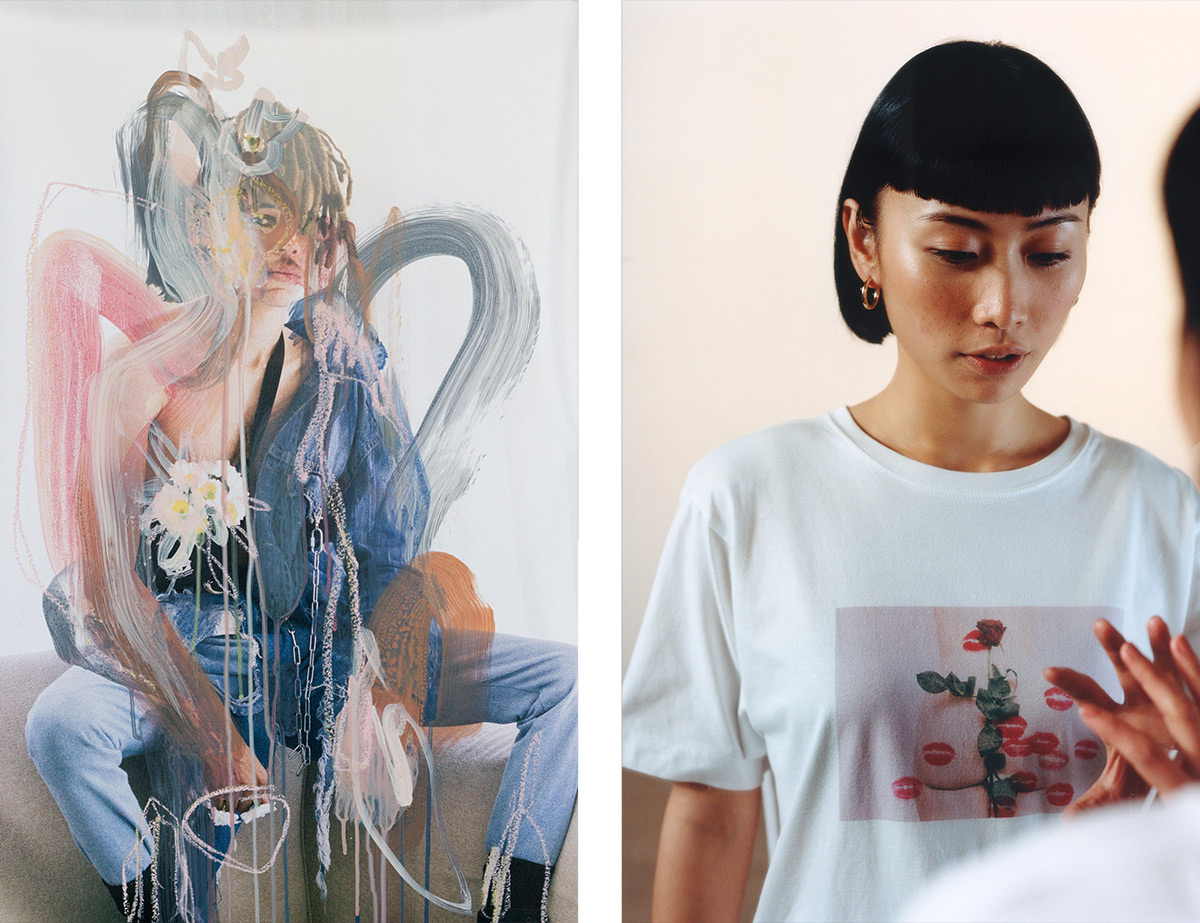
You’ve garnered quite the Instagram following, was using the platform to share your work a conscious decision?
It’s fascinating actually, I started a separate Instagram page just to document my work, but with the nature of the platform my following grew and it’s now where I connect with people. I think it’s the easiest and most accessible way to share work. I think the art world can sometimes be a bit snobby about Instagram. Like, ‘Oh if you share everything on Instagram, are you really a true artist?’. But times are changing! The people who need to see or connect with my work the most are a young female-identifying audience and they’re the main people that use social media so it ’s good for me. I can show in a gallery whenever I want, but it’s not about that for me. It’s about connecting with other women and keeping it real.
How do you go about finding the women we see featured in your work?
They are all my friends which is great! Or women I’ve met through social media – proof that there is a real community hidden in there that you can build upon if you have the right mindset. Women fascinate me. Every single painting is so different, because each person’s story is different. The thing that they have to share, or the thing I’m capturing is so different in each one.
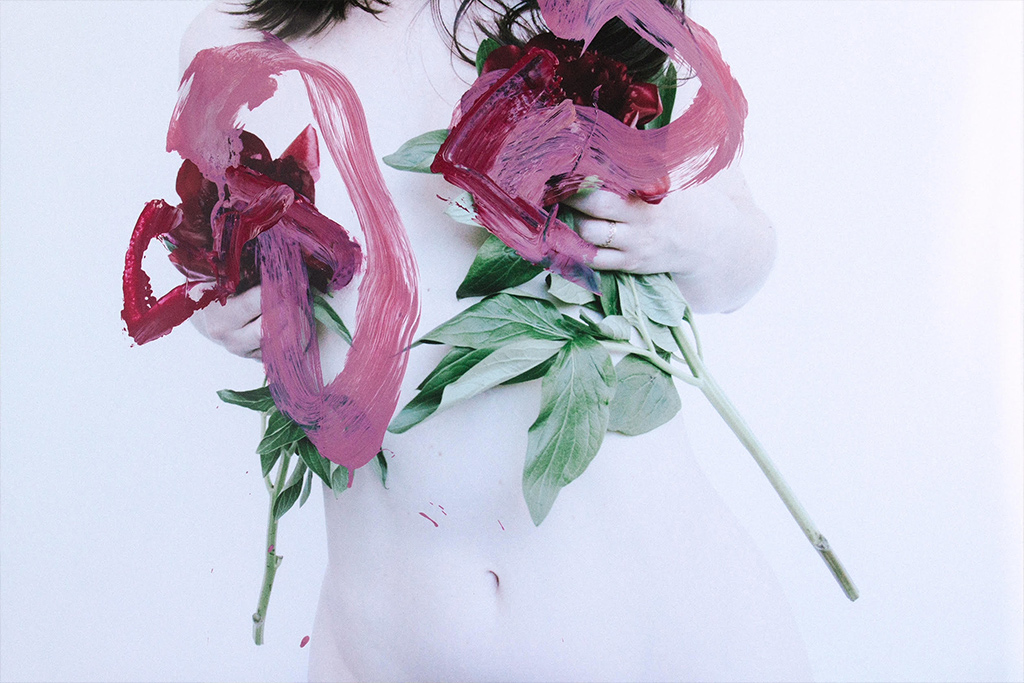
What about featuring in your own work, how did this come about?
I like to know what it feels like for my subjects when I photograph them. So I think that being in front of a camera, or maybe being photographed in a vulnerable position – like in my underwear – enables me to experience what that’s like in order to make others feel comfortable. If you’re not confident in front of a camera you start feeling uncomfortable instantly and worrying what you look like. It’s also part of my journey to accepting myself. I connect with other women about things because I’ve felt them myself. I think I’ll always be on a path to full self-acceptance and self-love. Like any other relationship, I think it’s something you have to work on.
What’s your advice to young or aspiring creatives in your space?
Keep going! Just don’t stop. I feel like there are so many moments where I’ve thought ‘Oh my god, I don’t know what I’m doing’, ‘Where do I go?’, ‘What do I do next?’. Even just making a conscious effort to go for a coffee with someone whose work you admire, or going to a gallery, going to a gig, or drawing a sketch each day – whatever it is it can be the most simple thing, but just keep pushing yourself. Keep yourself involved, no matter how minuscule that involvement might be. I think some of the days where I’ve broken through a creative block have been when I’ve been getting coffee with a friend who helped me get out of my rut. Or the days where I’ve been to a gallery and seen a painting that’s made me re-think everything. Just never stop.
50 artists, 50 t-shirt designs, 50% profit to artists, 50% profit to Amnesty International.
CLAIM YOUR VOICE



